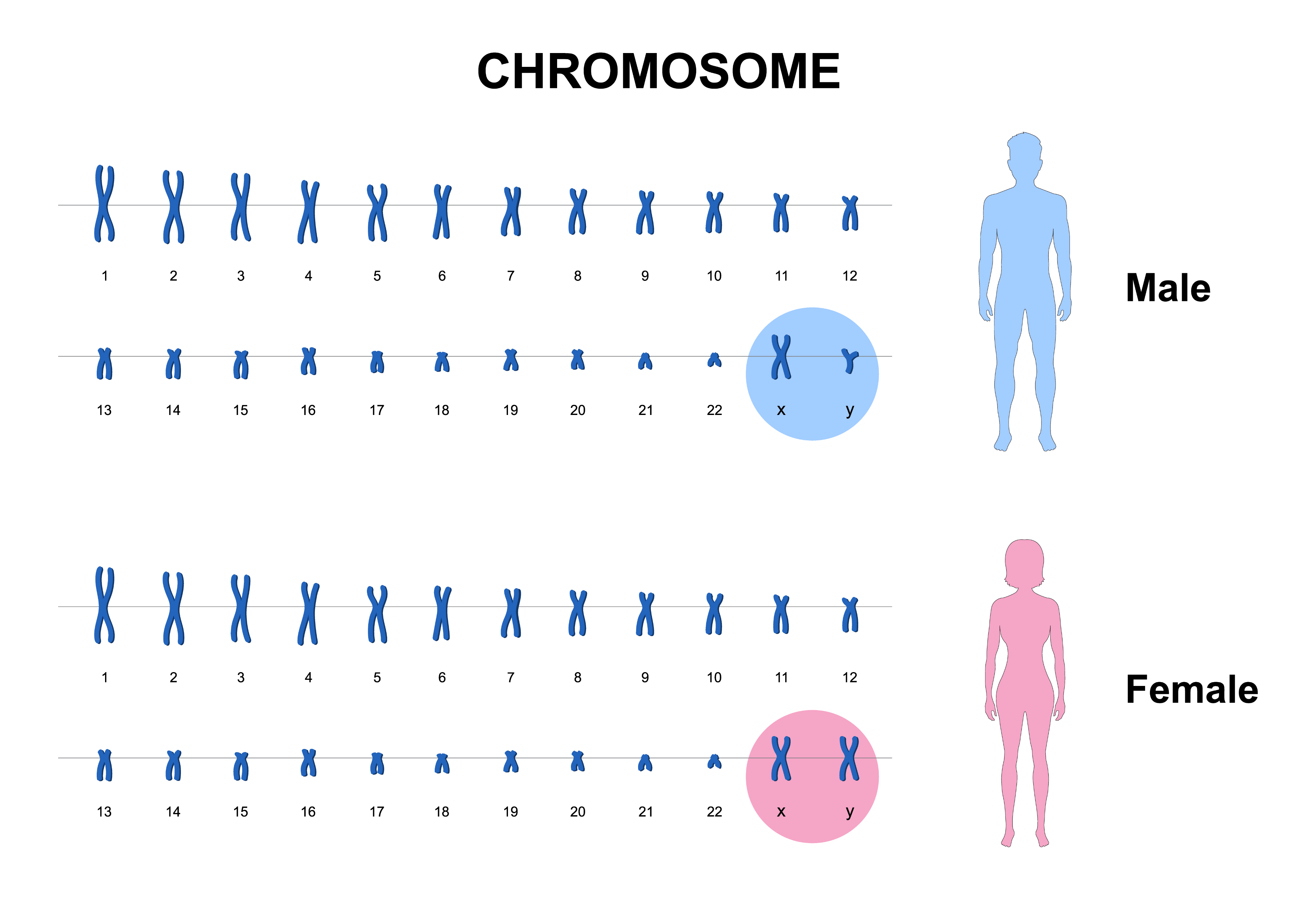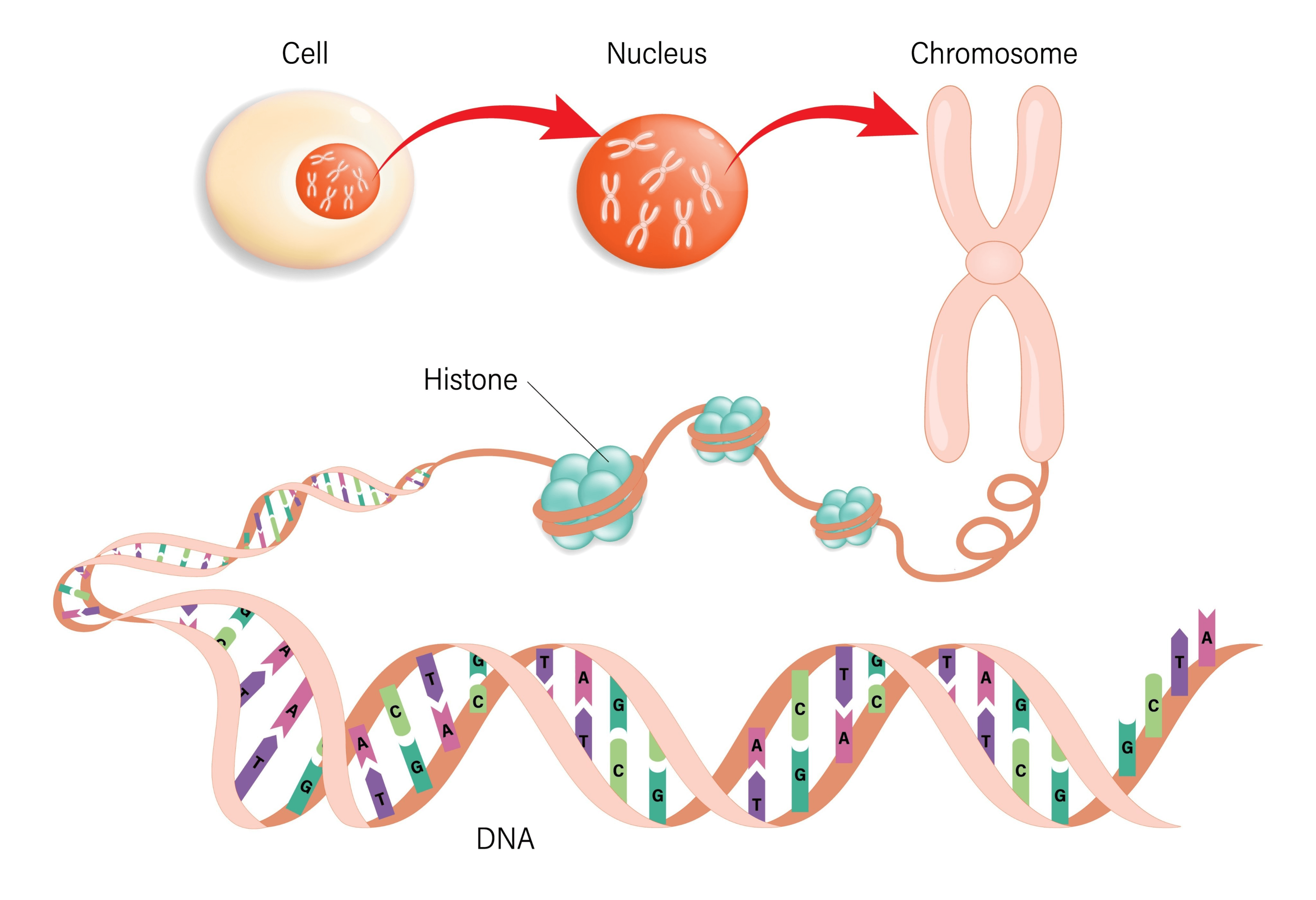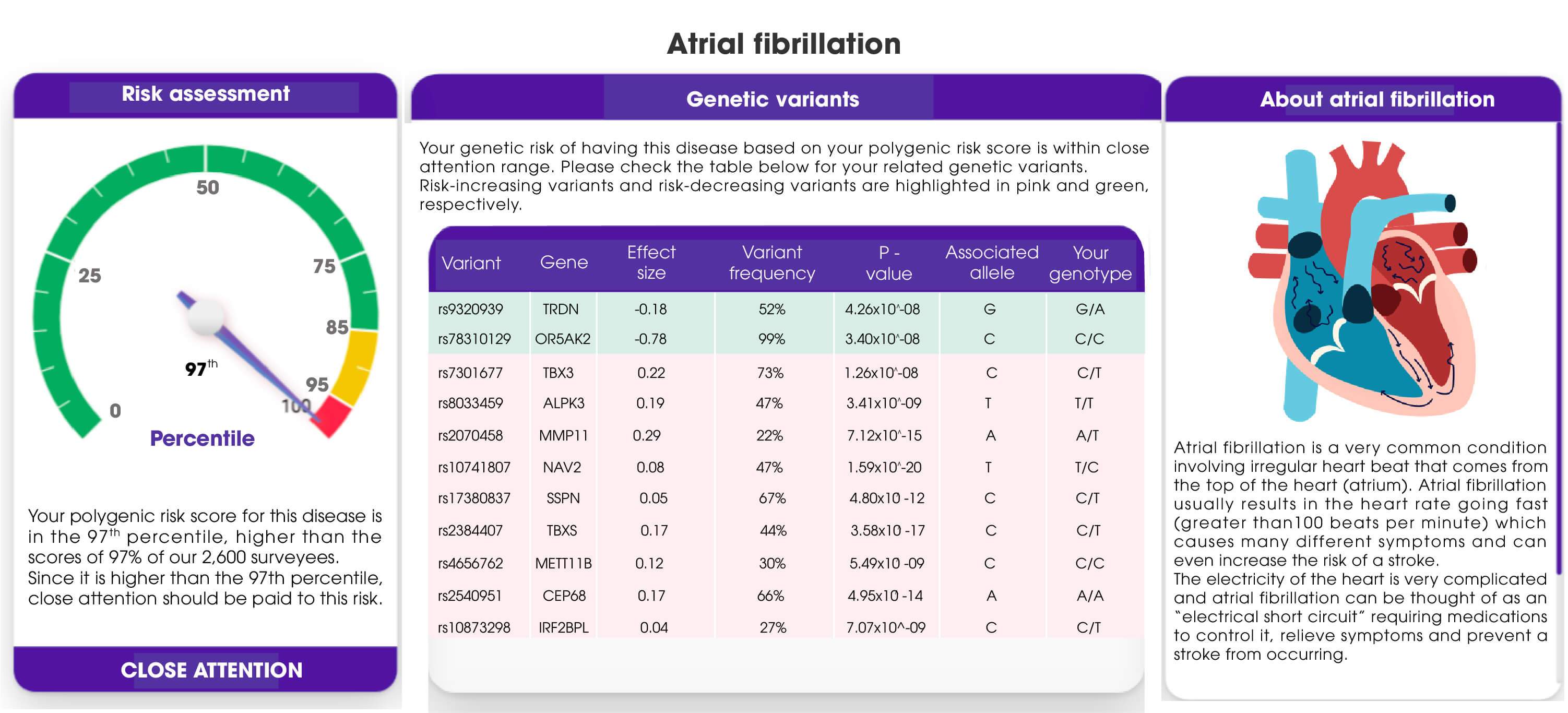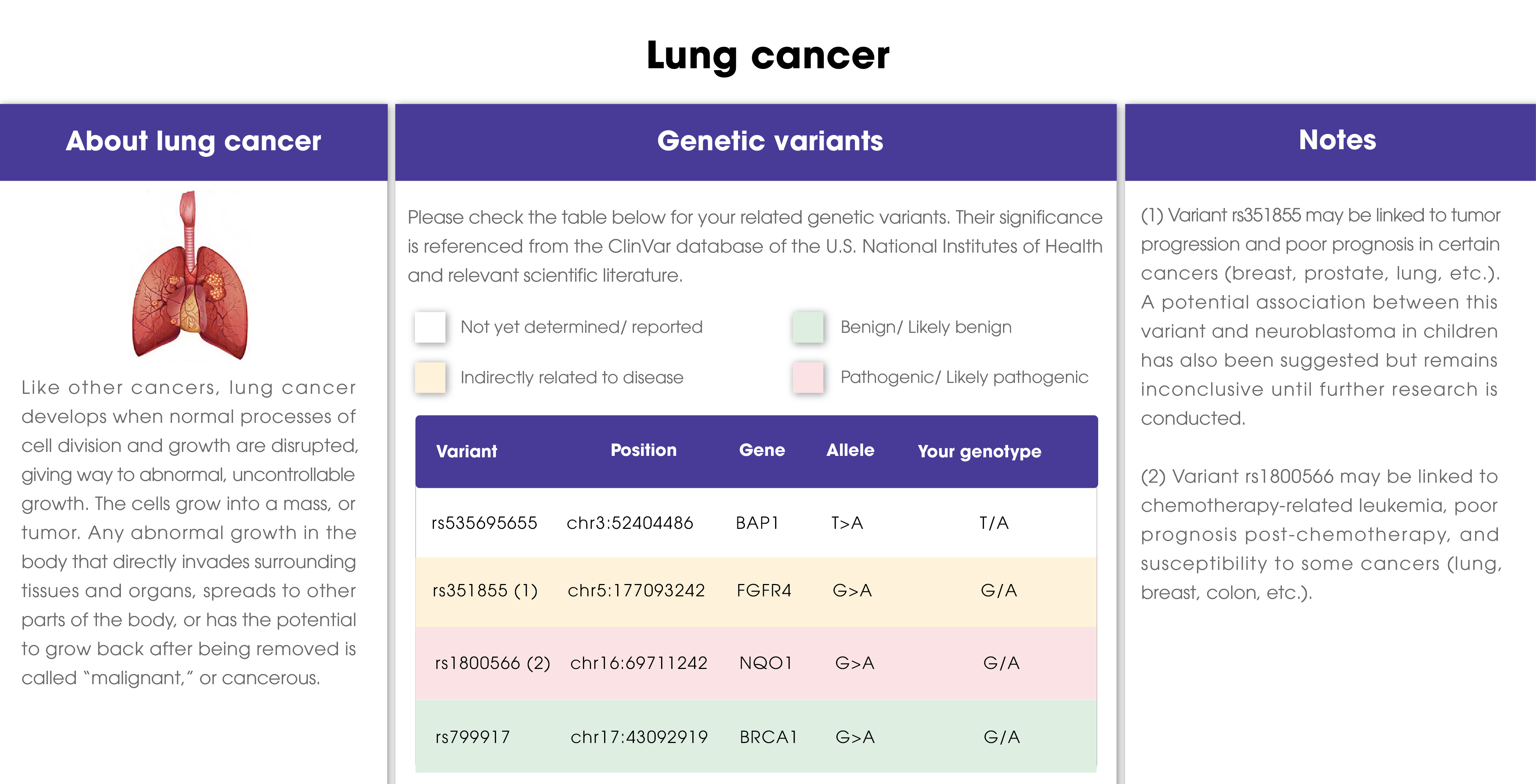DNA SEQUENCING

Figure 1: In human cells, there are 23 pairs of chromosomes.

Figure 2: Each chromosome is composed of a long DNA molecule combined with a type of protein called Histone.

Figure 3: The DNA molecule is composed of four types of nucleotides named Adenine (A), Guanine (G), Cytosine (C), and Thymine (T).
DNA sequencing is the process of determining the arrangement of nucleotides on the DNA molecules.
Sequencing DNA provides valuable information about genetic diseases and responses to the environment.
Finding variants associated with diseases
After sequencing your DNA, the next steps are:
- Collect the fully decoded set of genes in appropriate presentations.
- Identify the variants related to either common or severe diseases within that set of genes. Precision Med has established a variant database based on the latest molecular biology and medical genetics publications. The variants under investigation include single-nucleotide variants, insertions, deletions, and structural variants.
- Determine the probability of developing a disease using the percentile rank score method based on polygenic risk score (PRS) or by identifying variants that have a significant impact on disease-related gene activities (Genetic Variant method, used for Monogenic and Polygenic diseases).

Below is an example of the percentile rank score method using PRS on the whole genome sequencing (WGS) data
The reported disease is Atrial Fibrillation.

The report has three columns:
- The right column describes Atrial Fibrillation disease.
- The middle column indicates the disease-associated variants present in the individual's genome. The individual is reported to have multiple single-gene variants associated with an increased risk of Atrial Fibrillation. Their polygenic risk score is 97, compared to the reference group of 2,600 individuals, placing them in the 97th percentile.
- The 97th percentile suggests that this individual falls into the high-risk group, meaning they have a higher probability of developing Atrial Fibrillation and need to pay close attention to symptoms related to the disease.
- The left column presents the probability of high or low disease risk. A green indicator represents normal risks, a yellow indicator suggests the need for attention, and a red indicator signifies the need for close attention. In this individual's case, the red indicator indicates the area that requires significant attention.
Below is an example of the method identifying variants that have a significant impact on disease-related gene activities.
The reported disease is Lung Cancer

The report has three columns:
- The left column describes Lung Cancer.
- The middle column indicates the number of variants you have at positions corresponding to the variants mentioned by ClinVar. In the example above, you have 4 variants, in which variant rs351855 should be noted due to its indirect association with the disease (highlighted in yellow), and variant rs1800566 requires attention as it is directly associated with an increased disease risk (highlighted in red).
- The right column provides notes and explanations as needed.

Why should you choose WGS from Precision Med?
- Your entire genome has been sequenced using the leading technology from the United States.
- The genetic information is then analyzed to predict disease risks based on the most recent scientifically published variants.
- Special diseases are analyzed from the perspective of genetic variants and gene activities, tailored to each customer's specific requirements.
- Updates are provided on variants related to special traits such as beauty, intelligence, and talents.
- Risk analysis is conducted for specific diseases, including rare conditions, based on the customer's genetic data.